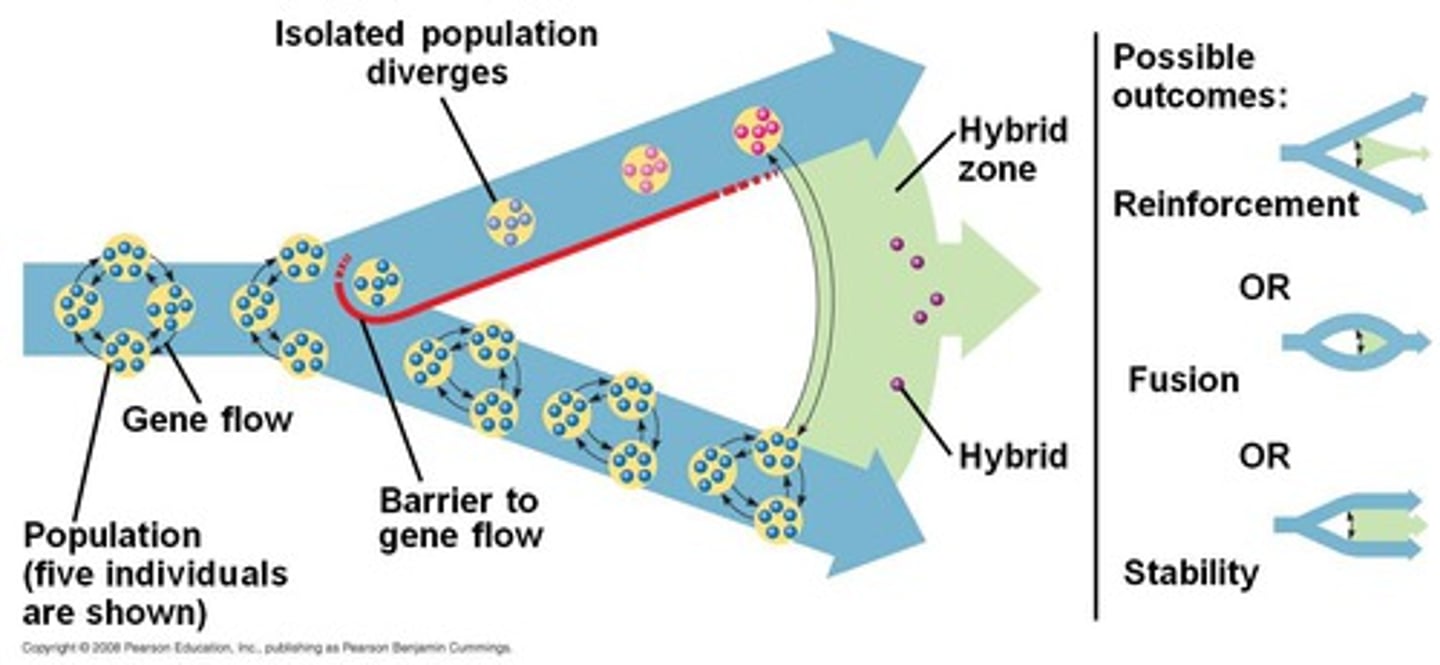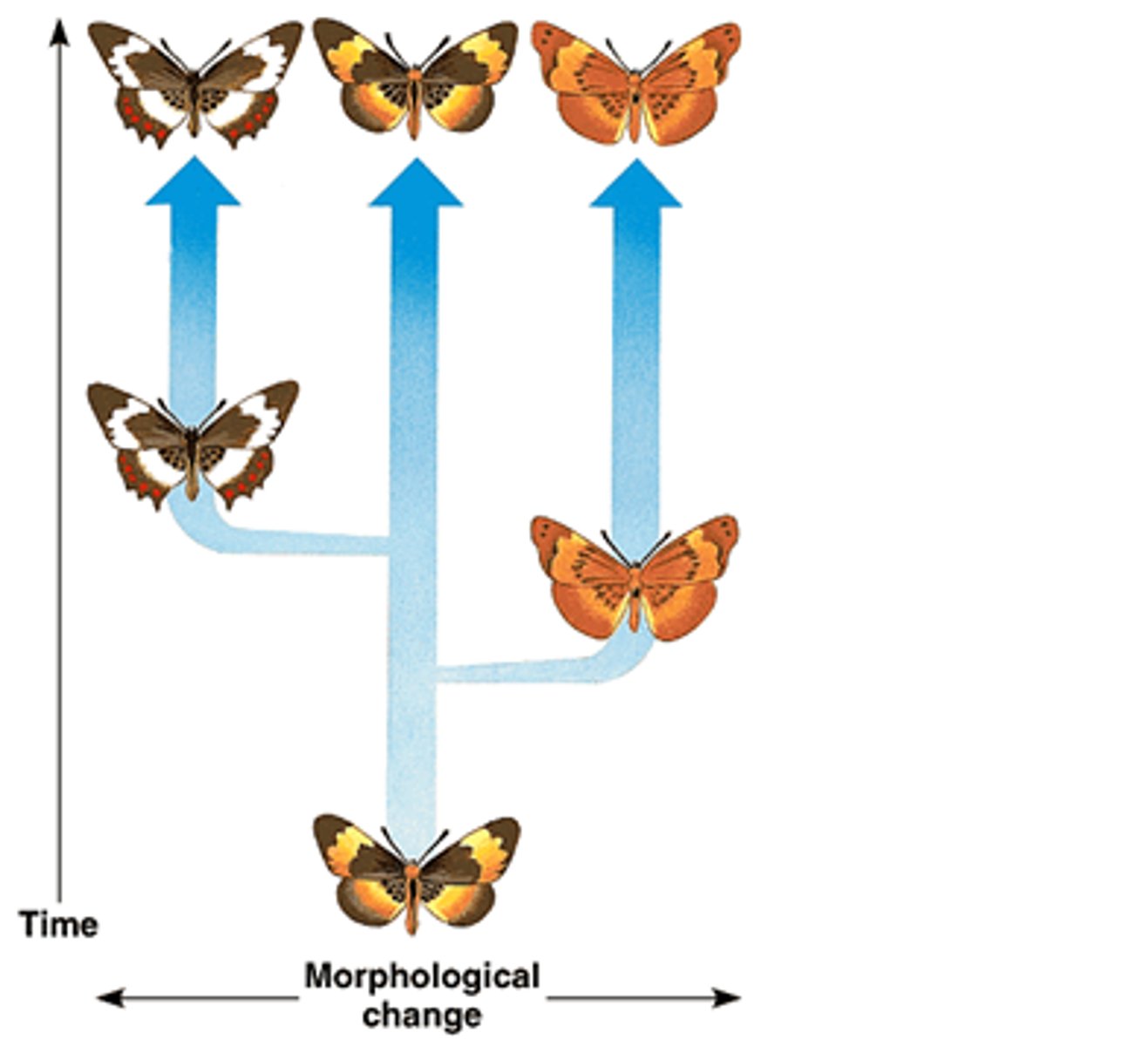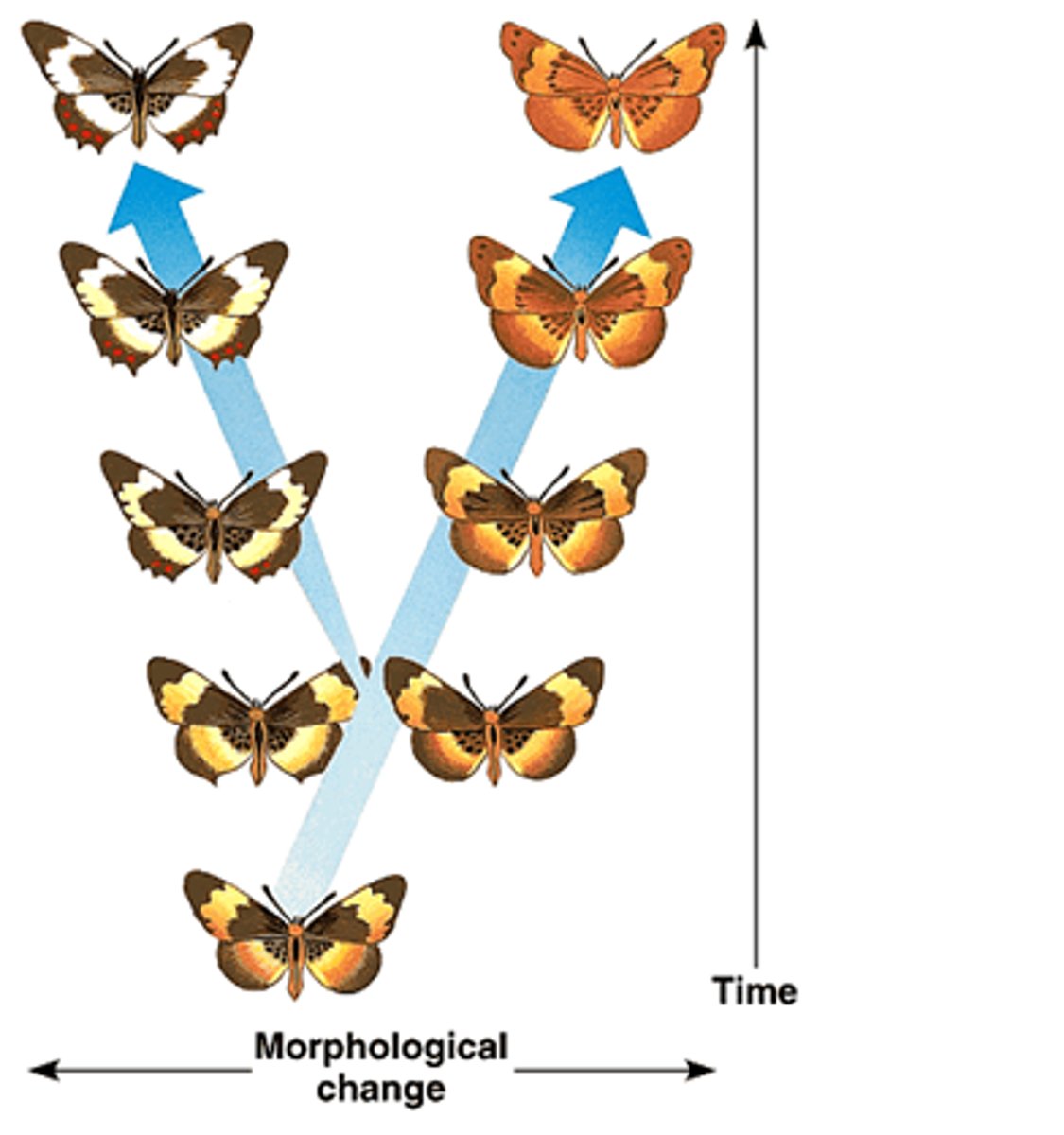Campbell Biology Chapter 24
1/26
There's no tags or description
Looks like no tags are added yet.
Name | Mastery | Learn | Test | Matching | Spaced |
|---|
No study sessions yet.
27 Terms
Speciation
The origin of new species
Macroevolution
Broad patterns of evolutionary change above the species level
Biological Species Concept
A group of populations whose members have the potential to interbreed in nature and produce viable,
fertile offspring
Reproductive isolation
Barriers impede two species from producing viable, fertile offspring
Hybrids
Offspring of crosses between different species
Prezygotic Barriers
Before sperm fertilizes egg
Habitat isolation
Two species encounter each other rarely, or not at all, because they occupy different habitats, even though not isolated by physical barriers
Temporal isolation
Species that breed at different times of the day, different seasons, or different years cannot mix their gametes
Behavioral isolation
Courtship rituals and other behaviors unique to a species are effective barriers
Mechanical isolation
Morphological differences can prevent successful mating
Gametic Isolation
Sperm of one species may not be able to fertilize eggs of another species
Postzygotic barriers
Inviability of offspring created after fertilization
Reduced hybrid viability
Fertilized eggs fail to develop
Reduced hybrid fertility
Even if hybrids are vigorous, they may be sterile
Hybrid breakdown
Some first-generation hybrids are fertile, but when they mate with another species or with either parent species, offspring of the next generation are feeble or sterile
Morphological Species Concept
Defines a species by structural features
Ecological Species Concept
Views a species in terms of its ecological niche
Phylogenetic species concept
Defines a species as the smallest group of individuals on a phylogenetic tree
Allopatric Speciation
Physical barrier separates a population; form of speciation
Sympatric Speciation
No barrier separates a population; form of speciation
Polyploidy
Possessing more than 2 sets of chromosomes; occurs most often in plants and decreases gene flow between polyploids and normal individuals
Hybrid Zone
Place where the ranges of two species overlap and they mate to produce hybrids
Reinforcement
Strengthening of barriers

Fusion
Weakening of barriers

Stability
Odd stasis of statis quo; though hybrids aren't healthy, they continue to be created

Punctuated Equilibrium
Periods of apparent stasis interrupted by sudden change; supported by fossil evidence

Gradualism
Slow, steady change of organisms to new species
